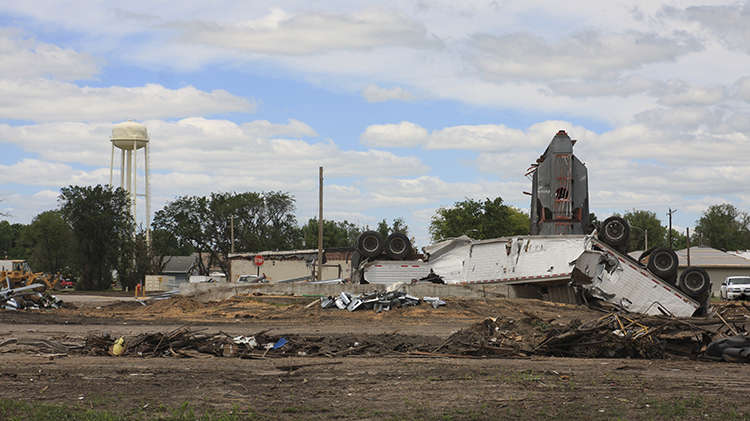
2015 ASHRAE Handbook—HVAC Applications
COMFORT APPLICATIONS
3. Commercial and Public Buildings
7. Educational Facilities
8. Health Care Facilities
11. Mass Transit
INDUSTRIAL APPLICATIONS
14. Industrial Air Conditioning
15. Enclosed Vehicular Facilities
19. Data Centers and Telecommunication Facilities
23. Museums, Galleries, Archives, and Libraries
24. Environmental Control for Animals and Plants
27. Power Plants
28. Nuclear Facilities
29. Mine Ventilation and Air Conditioning
31. Ventilation of the Industrial Environment
32. Industrial Local Exhaust
ENERGY-RELATED APPLICATIONS
35. Solar Energy Use
BUILDING OPERATIONS AND MANAGEMENT
36. Energy Use and Management
37. Owning and Operating Costs
38. Testing, Adjusting, and Balancing
39. Operation and Maintenance Management
41. Building Energy Monitoring
42. Supervisory Control Strategies and Optimization
43. HVAC Commissioning
GENERAL APPLICATIONS
44. Building Envelopes
46. Air Cleaners for Gaseous Contaminants
47. Design and Application of Controls
49. Water Treatment: Deposition, Corrosion,
and Biological Control
51. Snow Melting and Freeze Protection
53. Fire and Smoke Control
55. Seismic- and Wind-Resistant Design
58. Integrated Building Design
59. HVAC Security
60. Ultraviolet Air and Surface Treatment
61. Smart Building Systems
62. Moisture Management in Buildings
2014 ASHRAE Handbook—Refrigeration
SYSTEMS AND PRACTICES
1. Halocarbon Refrigeration Systems
2. Ammonia Refrigeration Systems
3. Carbon Dioxide Refrigeration Systems
9. Refrigerant Containment, Recovery, Recycling, and Reclamation
COMPONENTS AND EQUIPMENT
10. Insulation Systems for Refrigerant Piping
13. Secondary Coolants in Refrigeration Systems
15. Retail Food Store Refrigeration and Equipment
16. Food Service and General Commercial Refrigeration Equipment
17. Household Refrigerators and Freezers
FOOD COOLING AND STORAGE
19. Thermal Properties of Foods
20. Cooling and Freezing Times of Foods
21. Commodity Storage Requirements
22. Food Microbiology and Refrigeration
23. Refrigerated-Facility Design
24. Refrigerated-Facility Loads
REFRIGERATED TRANSPORT
25. Cargo Containers, Rail Cars, Trailers, and Trucks
26. Marine Refrigeration
27. Air Transport
FOOD, BEVERAGE, AND FLORAL APPLICATIONS
28. Methods of Precooling Fruits, Vegetables, and Cut Flowers
29. Industrial Food-Freezing Systems
30. Meat Products
31. Poultry Products
32. Fishery Products
33. Dairy Products
34. Eggs and Egg Products
35. Deciduous Tree and Vine Fruit
36. Citrus Fruit, Bananas, and Subtropical Fruit
37. Vegetables
38. Fruit Juice Concentrates and Chilled Juice Products
39. Beverages
40. Processed, Precooked, and Prepared Foods
41. Bakery Products
42. Chocolates, Candies, Nuts, Dried Fruits, and Dried Vegetables
INDUSTRIAL APPLICATIONS
43. Ice Manufacture
44. Ice Rinks
45. Concrete Dams and Subsurface Soils
46. Refrigeration in the Chemical Industry
LOW-TEMPERATURE APPLICATIONS
47. Cryogenics
48. Ultralow-Temperature Refrigeration
49. Biomedical Applications of Cryogenic Refrigeration
2013 ASHRAE Handbook—Fundamentals
PRINCIPLES
1. Psychrometrics
2. Thermodynamics and Refrigeration Cycles
3. Fluid Flow
4. Heat Transfer
5. Two-Phase Flow
6. Mass Transfer
7. Fundamentals of Control
8. Sound and Vibration
INDOOR ENVIRONMENTAL QUALITY
9. Thermal Comfort
10. Indoor Environmental Health
11. Air Contaminants
12. Odors
13. Indoor Environmental Modeling
LOAD AND ENERGY CALCULATIONS
14. Climatic Design Information
15. Fenestration
16. Ventilation and Infiltration
17. Residential Cooling and Heating Load Calculations
18. Nonresidential Cooling and Heating Load Calculations
19. Energy Estimating and Modeling Methods
HVAC DESIGN
20. Space Air Diffusion
21. Duct Design
22. Pipe Sizing
23. Insulation for Mechanical Systems
24. Airflow Around Buildings
BUILDING ENVELOPE
25. Heat, Air, and Moisture Control in Building Assemblies—Fundamentals
26. Heat, Air, and Moisture Control in Building Assemblies—Material Properties
27. Heat, Air, and Moisture Control in Building Assemblies—Examples
MATERIALS
28. Combustion and Fuels
29. Refrigerants
30. Thermophysical Properties of Refrigerants
31. Physical Properties of Secondary Coolants (Brines)
32. Sorbents and Desiccants
33. Physical Properties of Materials
GENERAL
34. Energy Resources
35. Sustainability
36. Measurement and Instruments
37. Abbreviations and Symbols
38. Units and Conversions
39. Codes and Standards
2012 ASHRAE Handbook—Systems and Equipment
AIR-CONDITIONING AND HEATING SYSTEMS
1. HVAC System Analysis and Selection
2. Decentralized Cooling and Heating
3. Central Cooling and Heating
4. Air Handling and Distribution
5. In-Room Terminal Systems
6. Panel Heating and Cooling
7. Combined Heat and Power Systems
8. Combustion Turbine Inlet Cooling
9. Applied Heat Pump and Heat Recovery Systems
10. Small Forced-Air Heating and Cooling Systems
11. Steam Systems
12. District Heating and Cooling
13. Hydronic Heating and Cooling
14. Condenser Water Systems
15. Medium- and High-Temperature Water Heating
16. Infrared Radiant Heating
17. Ultraviolet Lamp Systems
18. Variable-Refrigerant-Flow Systems
AIR-HANDLING EQUIPMENT AND COMPONENTS
19. Duct Construction
20. Room Air Distribution Equipment
21. Fans
22. Humidifiers
23. Air-Cooling and Dehumidifying Coils
24. Desiccant Dehumidification and Pressure- Drying Equipment
25. Mechanical Dehumidifiers and Related Components
26. Air-to-Air Energy Recovery Equipment
27. Air-Heating Coils
28. Unit Ventilators, Unit Heaters, and Makeup Air Units
29. Air Cleaners for Particulate Contaminants
30. Industrial Gas Cleaning and Air Pollution Control Equipment
HEATING EQUIPMENT AND COMPONENTS
31. Automatic Fuel-Burning Equipment
32. Boilers
33. Furnaces
34. Residential In-Space Heating Equipment
35. Chimney, Vent, and Fireplace Systems
36. Hydronic Heat-Distributing Units and Radiators
37. Solar Energy Equipment
COOLING EQUIPMENT AND COMPONENTS
38. Compressors
39. Condensers
40. Cooling Towers
41. Evaporative Air-Cooling Equipment
42. Liquid Coolers
43. Liquid-Chilling Systems
GENERAL COMPONENTS
44. Centrifugal Pumps
45. Motors, Motor Controls, and Variable-Speed Drives
46. Pipes, Tubes, and Fittings
47. Valves
48. Heat Exchangers
PACKAGED, UNITARY, AND SPLIT-SYSTEM EQUIPMENT
49. Unitary Air Conditioners and Heat Pumps
50. Room Air Conditioners and Packaged Terminal Air Conditioners
GENERAL
51. Thermal Storage
52. Codes and Standards